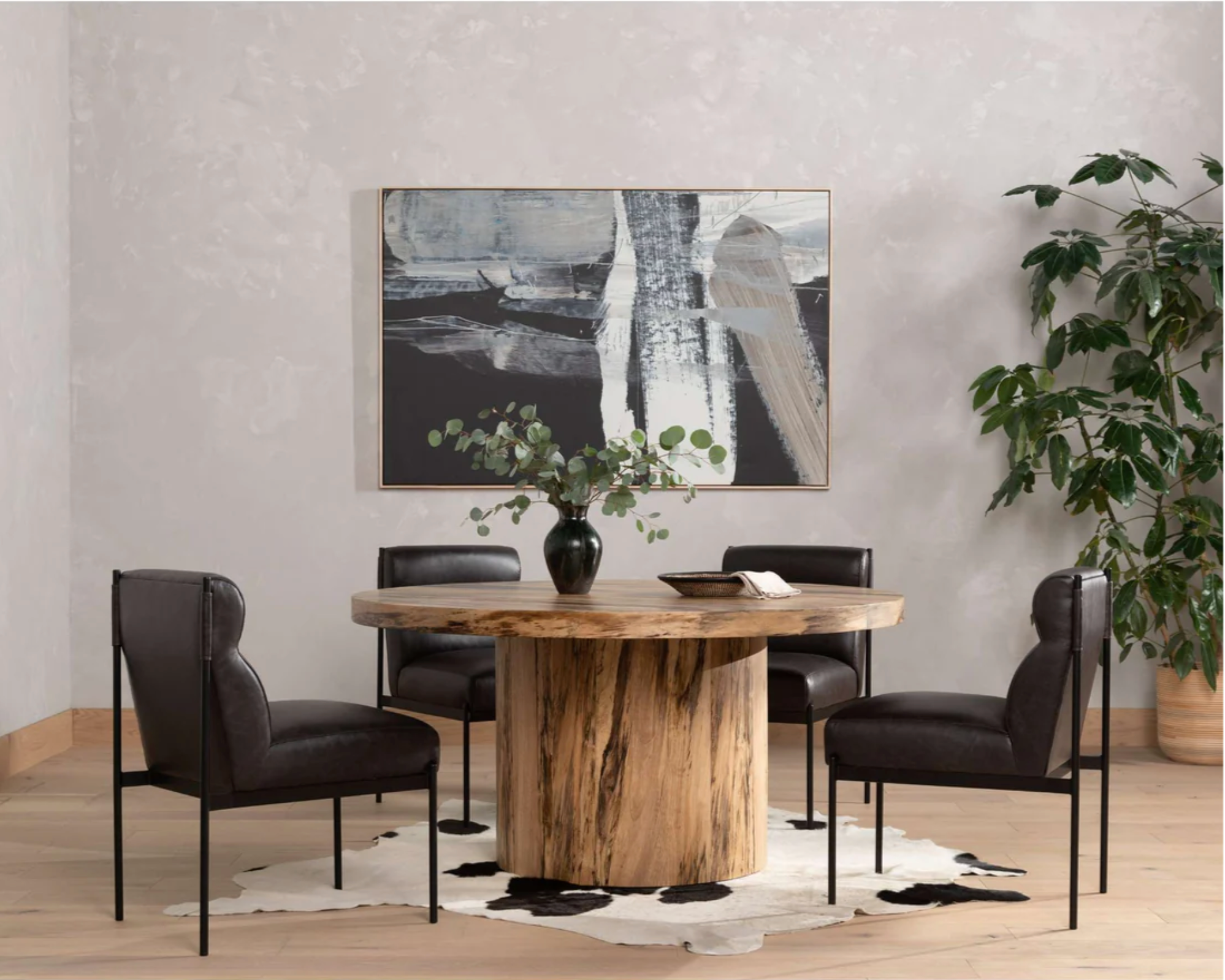We speak with clients all the time who are over-worried about styling spaces, and making "design mistakes." The old notion that all woods in a room need to match is a myth we're thrilled to dispel. This blog explores how different wood types and textures can not only coexist but also complement each other, enriching your space with a harmonious and dynamic aesthetic. We wanted to keep this blog as a guide for anyone interested in design. (The best tip is at the end)
Wood Types and Textures:
Exploring a variety of wood types can significantly enhance the aesthetics of any space. Here are some additional varieties to consider alongside oak, walnut, maple, and cherry:
Eucalyptus: A durable and resilient wood that develops a natural patina over time, eucalyptus brings a touch of time-tested elegance to your space.
Natural Pine: Known for preserving its unique character, natural pine adds warmth with its distinct texture and care essentials.
Reclaimed Wood: Characterized by the marks of time and the environment, reclaimed wood adds a story to your space, each piece unique with its own history.
Teak: Ideal for outdoor furniture, teak is a durable material that ages beautifully, revealing a graceful natural patina over time.
Yukas: While not detailed in the provided material, incorporating woods like yukas can introduce unique textures and tones not found in more common wood types.
Veneer: Offering a versatile range of unique styles, high-quality wood veneers over solid or engineered substrates can mimic the look of rare woods without the high cost, adding sophistication and variety.
Balancing Act:
Mixing wood types is an art. Here are some tips to achieve balance:
-
Consider Undertones: Woods with similar undertones (warm or cool) can harmoniously coexist.
-
Play with Contrast: Pair light woods like maple with darker tones like walnut for a striking contrast.
-
Unified Finishes: Using the same finish (matte, gloss, etc.) across different woods can tie the look together.
-
Distribute Evenly: Balance the presence of different woods around the room to avoid clustering one type in a single area.
Conclusion/ The Best Tip
Embracing a variety of wood types and textures can transform your space into a rich tapestry of natural beauty. If you don't know what your space needs, ask! Take a pic, and come by our design studio, or fill out a contact form. We are here to help.







